Kaiser Friedrich III class Battleships
 Germany (1896)
Germany (1896)
Friedrich III, Wilhelm II, Wilhelm der Grosse, Karl der Grosse, Barbarossa
The “Emperors” class – This class of 5 battleships (the “emperors”) included the Friedrich III, Wilhelm II, Wilhelm der Grosse, Karl der Grosse and Barbarossa. Very different from the Brandenburg in all respects, they would formed the basis of the other following three classes of pre-dreadnoughts. In 1914 these ships were in the second line.
In 1916, never having fired a shot in anger, they were disarmed and used as utility pontoons. Too slow and with insufficient artillery, they were no longer compatible with the German Hochseeflotte, especially after Jutland. Officially they had been known as the Kaiser Friedrich III class.
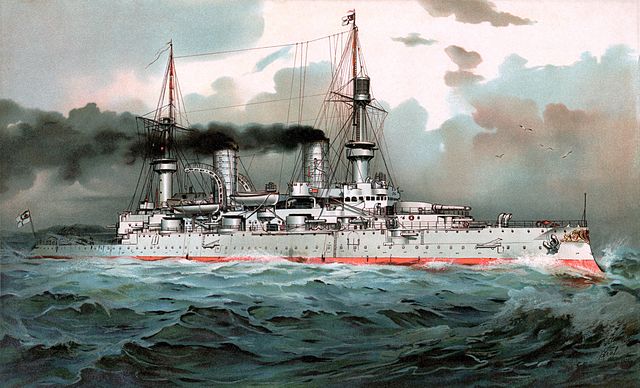
Lithograph of the Kaiser Wilhelm II
The Friedrich III was approved in 1894 and laid down in 1895, 1896 for Wilhelm II, 1896, 1898 for the others. They were launched in 1896-1900 and completed in 1898-1902. Their main artillery comprised two turrets armed with two 240 mm guns (vs 305mm in the Royal Navy), but they had an impressive secondary artillery:
No less than eighteen 150 mm guns divided into six single turrets and the others in barbettes. They were quite top-heavy and suffered from a lack of stability, and thus rebuilt in 1907-1910.
Design of the Kaiser class
They have been heavily influenced by Japanese cruisers victory a Yalu in 1894 and therefore opted for smaller quick-firing guns instead of large heavy guns usually used by contemporary battleships.
One idea was to raze the superstructures and demoralize the crew, rather than attempting to sink the ship. The armour scheme remains similar to the one used on the Brandenburg, but the propulsion system was improved and reorganized, incorporating a third propeller shaft.
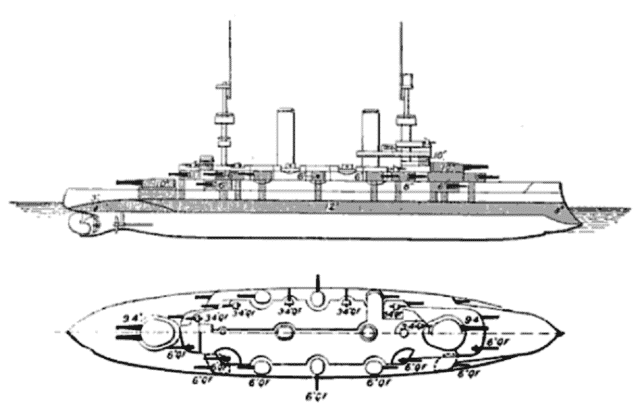
Brassey’s naval annual schematics of the configuration
That propulsion included 3-cylinder vertical triple expansion engines, driving three 3-bladed screws, and the first ship was given four Thornycroft and eight cylindrical boilers, the others having Marine type boilers in alternative.
Their arrangements differed, also to give an idea of the best combination for future developments. Top speed was 17.5 knots (32.4 km/h; 20.1 mph) which was rather good for the time, back in the mid-1890s. The ships also had 320 kW 74 and 240 kW 74 Volt generators.
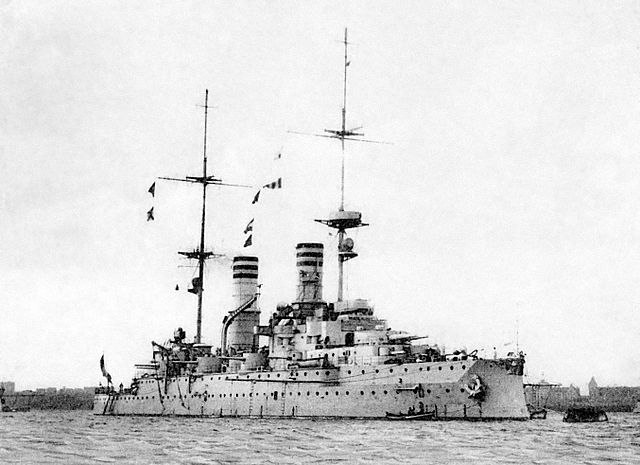
SMS Kaiser Barbarossa
They were generally regarded as excellent sea vessels, agile with a tight turning circle and responsive. They suffered only minor speed loss in heavy seas. It should be noted that they carried its own flotilla, two picket boats, two launches, one pinnace, two cutters, two yawls, and two dinghies.
The armament consisted in four 24 cm (9.4 in) SK L/40 guns in twin gun turrets mounted in Drh.L. C/98 turrets, allowing elevation to 30° and depression to −5°. Max range was 16,900 meters (18,500 yd). They fired 140-kilogram (310 lb) shells at 690 m/s (2,263 ft/s), and at a 4 rpm. 75 shells were carried per gun for a comfortable total of 300.
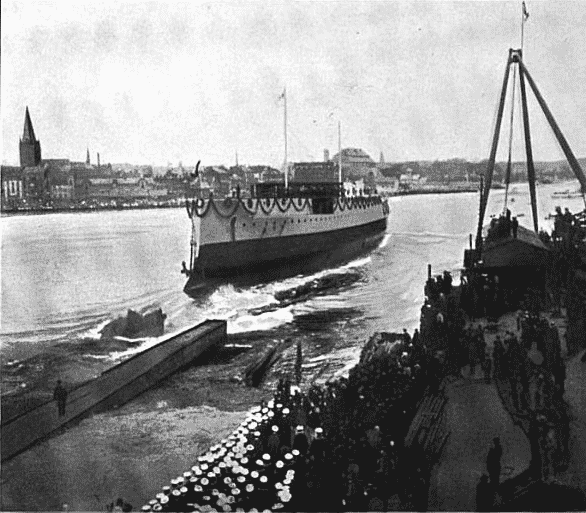
Launching of the SMS Kaiser Wilhelm der Grosse
The eighteen 15 cm (5.9 inch) SK L/40 guns were in turrets and barbettes and fired at 4-5 rpm. In addition twelve 8.8 cm (3.45 in) SK L/30 quick-firing guns were mounted in casemates.
For close combat, they were fitted with six 45 cm torpedo tubes, four amidships, one bow and one stern. Each carried a 87.5 kg (193 lb) TNT warhead and could be set to speeds up to 26 to 32 knots.
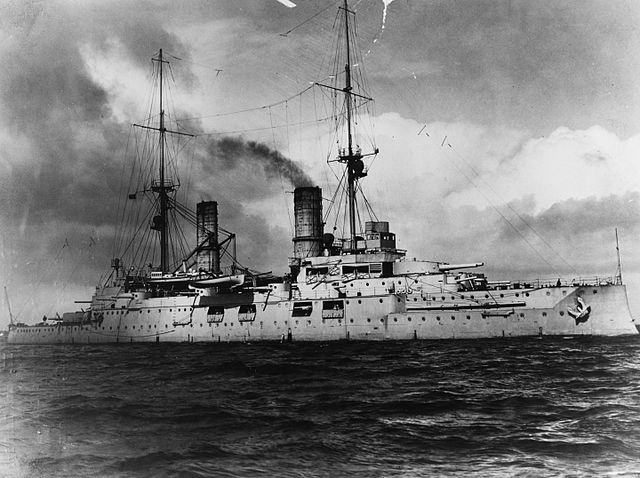
SMS Kaiser Wilhelm II after refit
1907 refit
All but Kaiser Karl der Grosse were so rebuilt. Their superstructures were lowered, as their funnels, the military masts were lightened, four 150 mm pieces in barbettes were removed and replaced by four 88 mm quick firing guns, also replaced on the superstructure. Stern TTs were also removed. Smoke stacks were lengthened.
Active service:
The five battleships were assigned to the 1st Squadron of the Heimatflotte (German home fleet) after commissioning. They conducted annual training maneuvers and after ten years of fleet service, were transferred to the 3rd Squadron (High Seas Fleet) and joined the reserve. They were recalled at the outbreak of World War I, but saw no action.
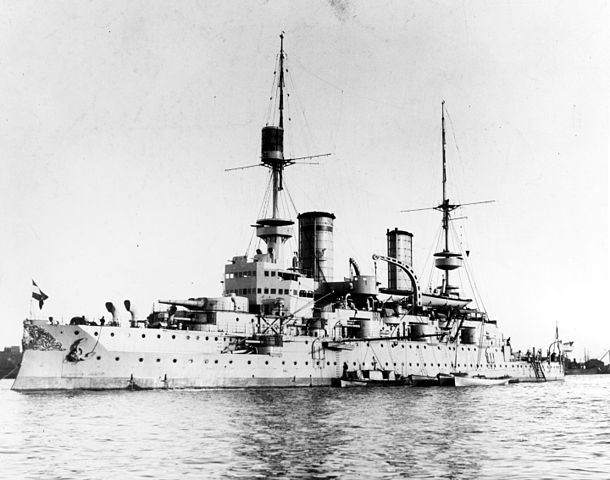
SMS Kaiser Friedrich III in 1900
The Wilhelm II was the flagship of the Hochseeflotte in Kiel until 1906. The other four were part of the 1st Squadron of the Heimatflotte, five taking part in extensive training maneuvers in September 1902. Kaiser Wilhelm II hosted Wilhelm II and staff during several of the mock engagements.
By 1911, the class was relegated to the 3rd Squadron, placed into reserve and by 1914 joined the Vth Squadron, but in February 1915, they leaved active service one again, and were disarmed by 1916. The first became a torpedo training ship, the Kaiser Wilhelm II a headquarters ship for the commander of the High Seas Fleet (Wilhelmshaven), the other three ships served as floating prisons.
Links
Kaiser Friedrich III class on wikipedia
The SMS Kaiser Wilhelm II (wikipedia)
Profile of the Barbarossa
Specs Conway’s all the world fighting ships 1860-1906.
Kaiser Friedrich III class specifications |
|
| Dimensions | 125.3 x 20.4 x 7.9 m (411 x 66 x 25 ft) |
| Displacement | 11,097 t – 11,785 t FL |
| Crew | 658 -687(wartime) |
| Propulsion | 3 screws, 3 shaft TE 13,000 PS (12,820 ihp; 9,560 kW) |
| Speed | 17.5 knots (32.4 km/h; 20.1 mph) |
| Range | 3,420 nmi (6,330 km; 3,940 mi) @10 knots (19 km/h; 12 mph) |
| Armament | 4 x 240 mm (9.4 in), 18 x 150 mm (5.9 in), 12 x 88 mm (3.5 in), 12 x 1-pdr (37 mm), 6 TT 450 mm (18 in) Sub |
| Armor | Belt 150-300 mm (11.8 in), casemates 150 mm, Turrets 250 mm (9.8 in), Blockhaus 250 mm, deck 65 mm (2.6 in) |
Gallery
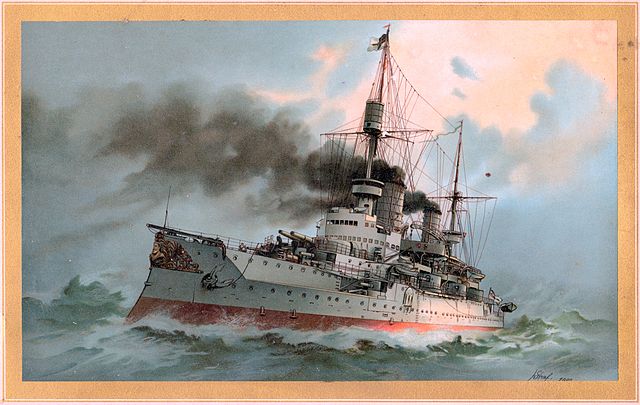
Kaiser Friedrich III lithograph showing its pre-refit superstructures
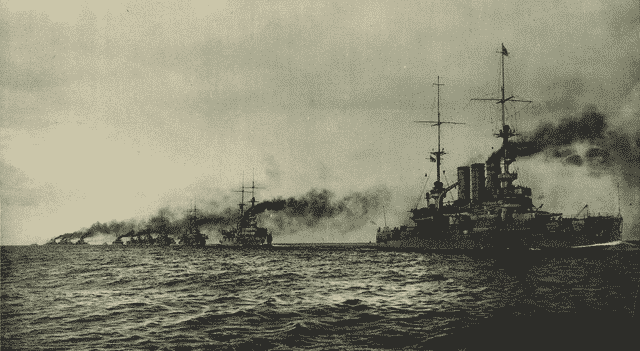
The high sea fleet pre-dreadnoughts battleline
Illustration of the Kaiser Barbarossa in 1914
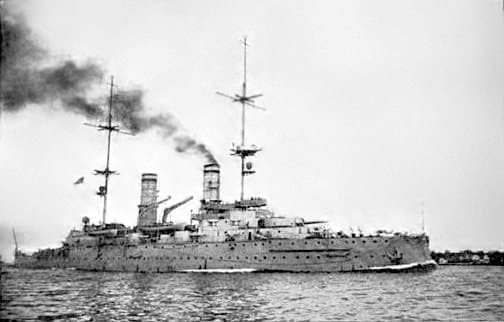
SMS Kaiser Barbarossa after refit
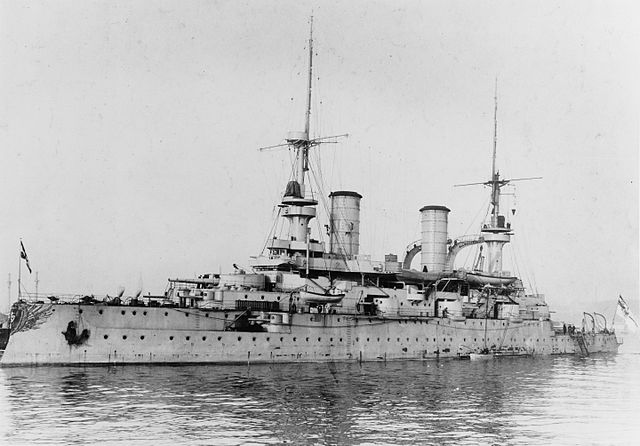
SMS Kaiser Karl der Grosse
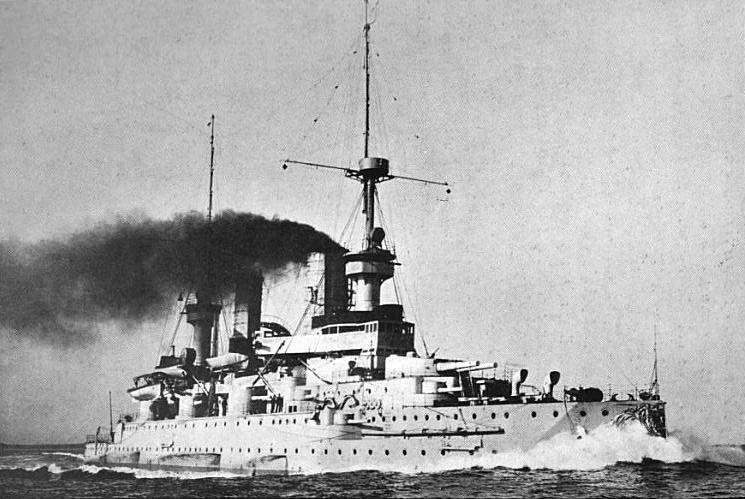
SMS Kaiser Wilhelm II
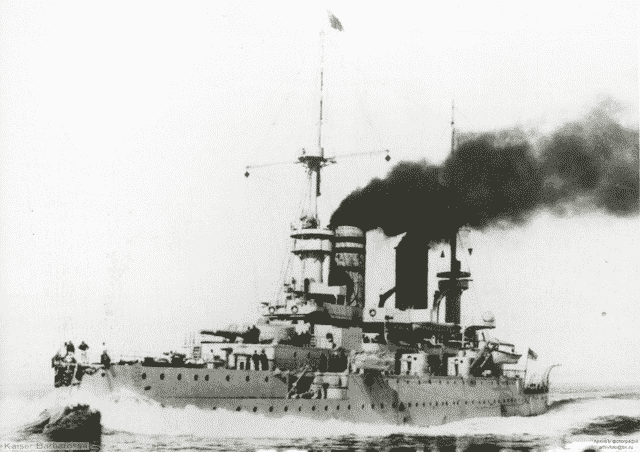
SMS Kaiser Barbarossa, full speed.

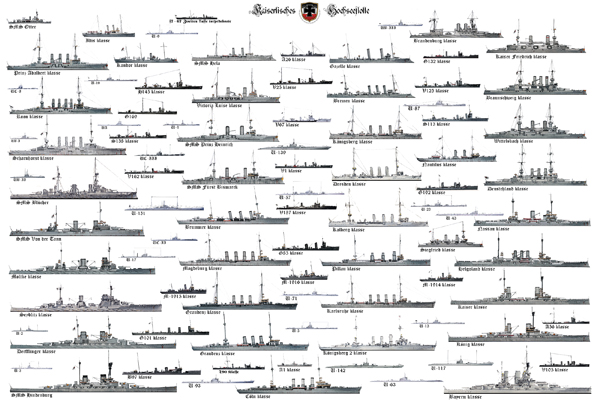
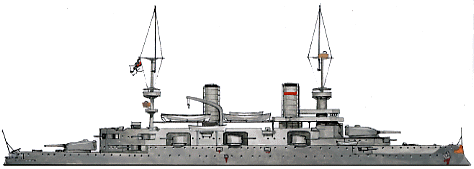
 Latest Facebook Entry -
Latest Facebook Entry -  X(Tweeter) Naval Encyclopedia's deck archive
X(Tweeter) Naval Encyclopedia's deck archive Instagram (@navalencyc)
Instagram (@navalencyc)





 French Navy
French Navy Royal Navy
Royal Navy Russian Navy
Russian Navy Armada Espanola
Armada Espanola Austrian Navy
Austrian Navy K.u.K. Kriegsmarine
K.u.K. Kriegsmarine Dansk Marine
Dansk Marine Nautiko Hellenon
Nautiko Hellenon Koninklije Marine 1870
Koninklije Marine 1870 Marinha do Brasil
Marinha do Brasil Osmanlı Donanması
Osmanlı Donanması Marina Do Peru
Marina Do Peru Marinha do Portugal
Marinha do Portugal Regia Marina 1870
Regia Marina 1870 Nihhon Kaigun 1870
Nihhon Kaigun 1870 Preußische Marine 1870
Preußische Marine 1870 Russkiy Flot 1870
Russkiy Flot 1870 Svenska marinen
Svenska marinen Søværnet
Søværnet Union Navy
Union Navy Confederate Navy
Confederate Navy Armada de Argentina
Armada de Argentina Imperial Chinese Navy
Imperial Chinese Navy Marinha do Portugal
Marinha do Portugal Mexico
Mexico Kaiserliche Marine
Kaiserliche Marine 1898 US Navy
1898 US Navy Sovietskiy Flot
Sovietskiy Flot Royal Canadian Navy
Royal Canadian Navy Royal Australian Navy
Royal Australian Navy RNZN Fleet
RNZN Fleet Chinese Navy 1937
Chinese Navy 1937 Kriegsmarine
Kriegsmarine Chilean Navy
Chilean Navy Danish Navy
Danish Navy Finnish Navy
Finnish Navy Hellenic Navy
Hellenic Navy Polish Navy
Polish Navy Romanian Navy
Romanian Navy Turkish Navy
Turkish Navy Royal Yugoslav Navy
Royal Yugoslav Navy Royal Thai Navy
Royal Thai Navy Minor Navies
Minor Navies Albania
Albania Austria
Austria Belgium
Belgium Columbia
Columbia Costa Rica
Costa Rica Cuba
Cuba Czechoslovakia
Czechoslovakia Dominican Republic
Dominican Republic Haiti
Haiti Hungary
Hungary Honduras
Honduras Estonia
Estonia Iceland
Iceland Eire
Eire Equador
Equador Iran
Iran Iraq
Iraq Latvia
Latvia Liberia
Liberia Lithuania
Lithuania Mandchukuo
Mandchukuo Morocco
Morocco Nicaragua
Nicaragua Persia
Persia San Salvador
San Salvador Sarawak
Sarawak Uruguay
Uruguay Venezuela
Venezuela Zanzibar
Zanzibar Warsaw Pact Navies
Warsaw Pact Navies Bulgaria
Bulgaria Hungary
Hungary

 Bundesmarine
Bundesmarine Dutch Navy
Dutch Navy Hellenic Navy
Hellenic Navy Marina Militare
Marina Militare Yugoslav Navy
Yugoslav Navy Chinese Navy
Chinese Navy Indian Navy
Indian Navy Indonesian Navy
Indonesian Navy JMSDF
JMSDF North Korean Navy
North Korean Navy Pakistani Navy
Pakistani Navy Philippines Navy
Philippines Navy ROKN
ROKN Rep. of Singapore Navy
Rep. of Singapore Navy Taiwanese Navy
Taiwanese Navy IDF Navy
IDF Navy Saudi Navy
Saudi Navy Royal New Zealand Navy
Royal New Zealand Navy Egyptian Navy
Egyptian Navy South African Navy
South African Navy






























 Ukrainian Navy
Ukrainian Navy dbodesign
dbodesign